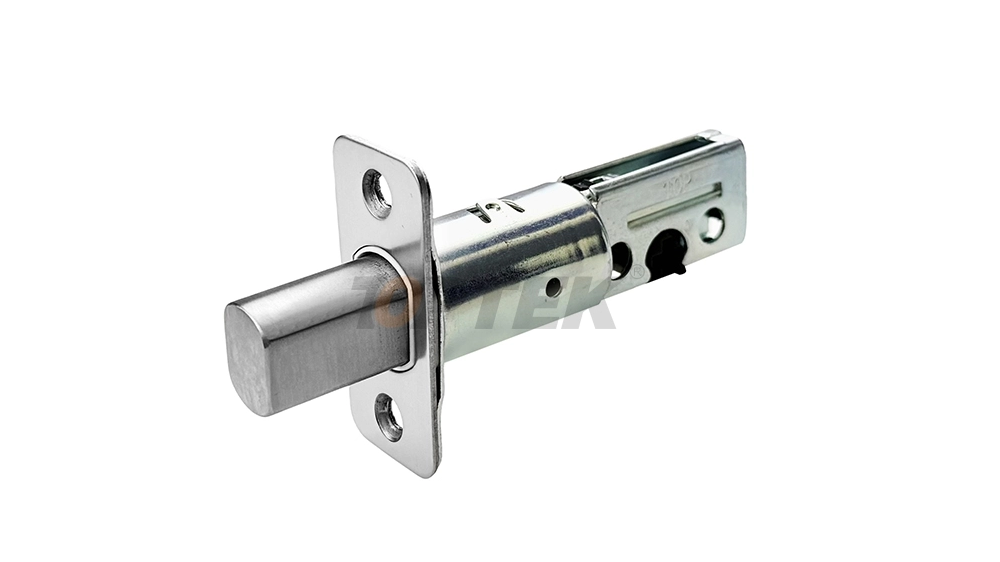Getting locked out of your home is frustrating, especially when you're facing a stubborn deadbolt lock. Whether you've lost your keys, the lock mechanism has jammed, or you're dealing with an emergency situation, knowing how to open a deadbolt lock can save you time, money, and stress.
This guide covers five proven methods for opening deadbolt locks, from simple techniques using household items to more advanced approaches. We'll also discuss when it's appropriate to attempt these methods and when you should call a professional locksmith instead.
Important note: These techniques should only be used on locks you own or have explicit permission to open. Attempting to open locks without proper authorization is illegal and could result in criminal charges.
What Makes Deadbolt Locks Different
Before diving into opening techniques, it's helpful to understand what you're working with. Deadbolt locks differ from standard door handle locks in several key ways:
· Solid construction: The bolt extends fully into the door frame, making forced entry more difficult
· No spring mechanism: Unlike regular locks, deadbolts require deliberate action to retract
· Single or double cylinder options: Some operate with a key on both sides, while others use a thumb turn on the interior
These features make deadbolts more secure but also more challenging to open without the proper key.
Method 1: Lock Picking with Household Items
Lock picking might sound like something only professionals can do, but basic deadbolt picking is achievable with common household items and patience.
What You'll Need
· Two paperclips or bobby pins
· Small flathead screwdriver (optional)
· Good lighting
· Steady hands
Step-by-Step Process
Prepare your tools: Straighten one paperclip completely—this becomes your "rake." Bend the end of the second paperclip at a 90-degree angle to create an "L" shape—this is your tension wrench.
Apply tension: Insert the L-shaped paperclip into the bottom of the keyhole. Apply gentle, consistent pressure in the direction the key would normally turn.
Rake the pins: Insert the straight paperclip above the tension wrench. Gently push up on the pins while maintaining tension with your other hand. You should feel individual pins clicking into place.
Test the turn: Once all pins are set, the lock should turn. If it doesn't work immediately, release tension, reset, and try again.
This method requires practice and won't work on all deadbolt types, particularly high-security or electronic models.
Method 2: Credit Card Technique
While less effective on deadbolts than on spring-loaded locks, the credit card method can sometimes work on older or poorly installed deadbolt locks.
When This Method Works
· The door frame has some give or flexibility
· There's a gap between the door and frame
· The deadbolt isn't fully extended into the frame
The Process
Choose the right card: Use an old gift card or membership card—never use an active credit card as it might break.
Position the card: Slide the card between the door and frame at the level of the deadbolt.
Apply pressure: Push the card toward the bolt while simultaneously pushing the door. The goal is to compress the bolt back into the door.
Work the angle: Try different angles and apply steady pressure. This method requires patience and may not work on properly installed deadbolts.

Method 3: Drilling the Lock
Drilling should be considered a last resort, as it permanently damages the lock and requires replacement afterward.
When Drilling Is Appropriate
· You own the property
· The lock is broken beyond repair
· Emergency access is needed
· You plan to replace the lock anyway
Safety and Technique
Gather proper tools: You'll need a power drill, drill bits (start with 1/8 inch), safety glasses, and gloves.
Locate the drill point: Aim for the shear line where the key pins meet the driver pins, typically about 2/3 up from the bottom of the keyhole.
Drill carefully: Start with a small bit and gradually increase size. Drill slowly to avoid overheating the metal.
Clear debris: Frequently remove metal shavings to prevent jamming your drill bit.
Turn the lock: Once you've drilled through the pins, use a flathead screwdriver to turn the lock mechanism.
Remember that drilling creates metal shavings and noise, so it's not suitable for situations requiring discretion.
Method 4: Bumping Technique
Lock bumping uses specially cut keys to manipulate the lock's pin system. This method requires a bump key, which can be purchased online or made from a blank key.
Understanding Bump Keys
A bump key is cut so that all teeth are at the deepest cut setting. When inserted and "bumped" with force, it temporarily aligns all pins, allowing the lock to turn.
The Bumping Process
Insert the bump key: Place it in the lock, leaving about 1mm protruding.
Apply tension: Use light pressure in the turning direction.
Strike the key: Use a small hammer or screwdriver handle to tap the bump key while maintaining tension.
Turn immediately: The moment you feel the pins align, turn the key quickly.
Bumping can be effective but may not work on modern high-security deadbolts with anti-bump features.
Method 5: Calling a Professional Locksmith
Sometimes the best approach is admitting when you need professional help. Licensed locksmiths have specialized tools and expertise that make lock opening faster and less damaging.
When to Call a Professional
· You've tried other methods unsuccessfully
· The lock is high-security or electronic
· You're uncomfortable attempting lock manipulation
· You need the lock to remain functional
· It's a rental property (always get landlord permission first)
What to Expect
Professional locksmiths typically charge between $75-$200 for lockout services, depending on your location and time of day. Emergency after-hours service costs more but provides immediate relief.
Legal and Ethical Considerations
Before attempting any lock-opening technique, consider these important points:
Ownership verification: Only attempt these methods on locks you own or have explicit permission to open.
Documentation: Keep proof of ownership or rental agreements handy in case law enforcement questions your actions.
Rental properties: Always contact your landlord or property manager first. Most rental agreements specify procedures for lockouts.
Professional appearance: If you're working on a lock in public, be prepared to explain your situation to neighbors or authorities.
Prevention: Avoiding Future Lockouts
The best solution to being locked out is preventing it from happening again:
· Hide a spare key in a lockbox
· Give a trusted neighbor or friend a spare key
· Consider upgrading to a smart lock with keypad entry
· Develop a routine of checking for your keys before leaving
· Install a secondary lock that doesn't require a key from inside
Taking Action: Your Next Steps
Getting locked out doesn't have to ruin your day. Start with the method that seems most appropriate for your situation and skill level. Lock picking with household items offers a good balance of effectiveness and safety for most people.
If you're uncomfortable attempting any of these techniques, there's no shame in calling a professional locksmith. The cost of professional service often outweighs the risk of damaging your lock or door.
Consider this experience a reminder to implement prevention strategies. Whether it's hiding a spare key or upgrading to a smart lock, taking proactive steps now will save you stress and expense later.
China Deadbolt Lock
Deadbolt Lock
deadbolt lock Supplier
English
العربية
Français
Русский
Español
Português
Deutsch
italiano
日本語
한국어
Nederlands
Tiếng Việt
ไทย
Polski
Türkçe
አማርኛ
ພາສາລາວ
ភាសាខ្មែរ
Bahasa Melayu
ဗမာစာ
தமிழ்
Filipino
Bahasa Indonesia
magyar
Română
Čeština
Монгол
қазақ
Српски
हिन्दी
فارسی
Kiswahili
Slovenčina
Slovenščina
Norsk
Svenska
українська
Ελληνικά
Suomi
Հայերեն
עברית
Latine
Dansk
اردو
Shqip
বাংলা
Hrvatski
Afrikaans
Gaeilge
Eesti keel
Māori
සිංහල
नेपाली
Oʻzbekcha
latviešu
অসমীয়া
Aymara
Azərbaycan dili
Bamanankan
Euskara
Беларуская мова
भोजपुरी
Bosanski
Български
Català
Cebuano
Corsu
ދިވެހި
डोग्रिड ने दी
Esperanto
Eʋegbe
Frysk
Galego
ქართული
guarani
ગુજરાતી
Kreyòl ayisyen
Hausa
ʻŌlelo Hawaiʻi
Hmoob
íslenska
Igbo
Ilocano
Basa Jawa
ಕನ್ನಡ
Kinyarwanda
गोंगेन हें नांव
Krio we dɛn kɔl Krio
Kurdî
Kurdî
Кыргызча
Lingala
Lietuvių
Oluganda
Lëtzebuergesch
Македонски
मैथिली
Malagasy
മലയാളം
Malti
मराठी
ꯃꯦꯇꯥꯏ (ꯃꯅꯤꯄꯨꯔꯤ) ꯴.
Mizo tawng
Chichewa
ଓଡ଼ିଆ
Afaan Oromoo
پښتو
ਪੰਜਾਬੀ
Runasimi
Gagana Samoa
संस्कृत
Gaelo Albannach
Sepeti
Sesotho
chiShona
سنڌي
Soomaali
Basa Sunda
Wikang Tagalog
Тоҷикӣ
Татарча
తెలుగు
ትግንያውያን
Xitsonga
Türkmençe
संस्कृत
ئۇيغۇرچە
Cymraeg
isiXhosa
ייִדיש
Yorùbá
isiZulu

































